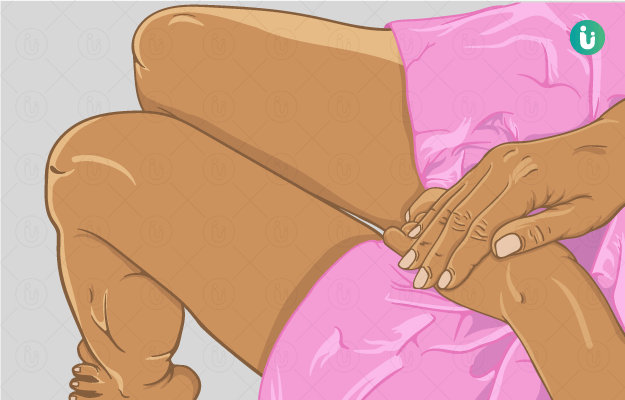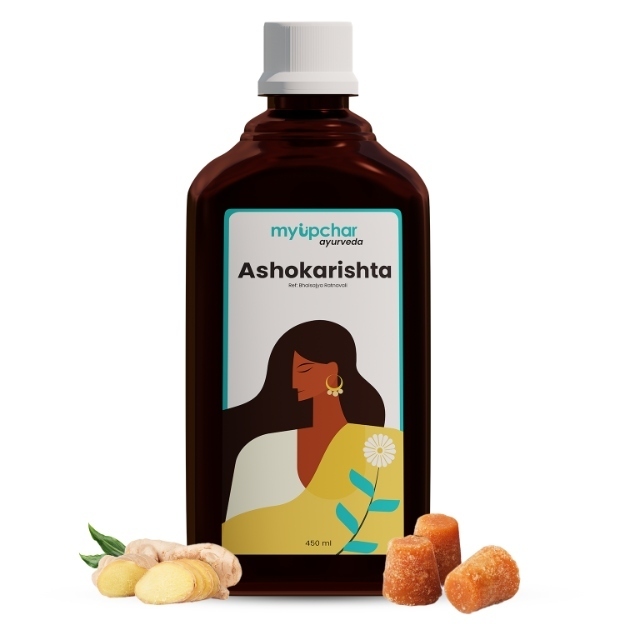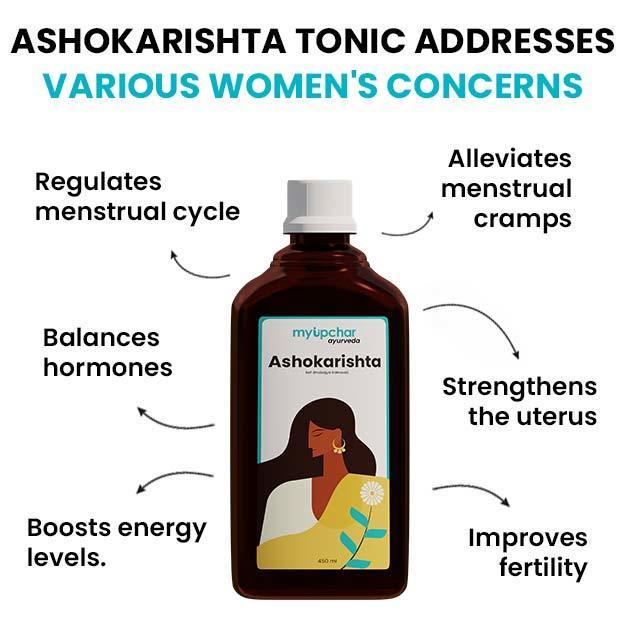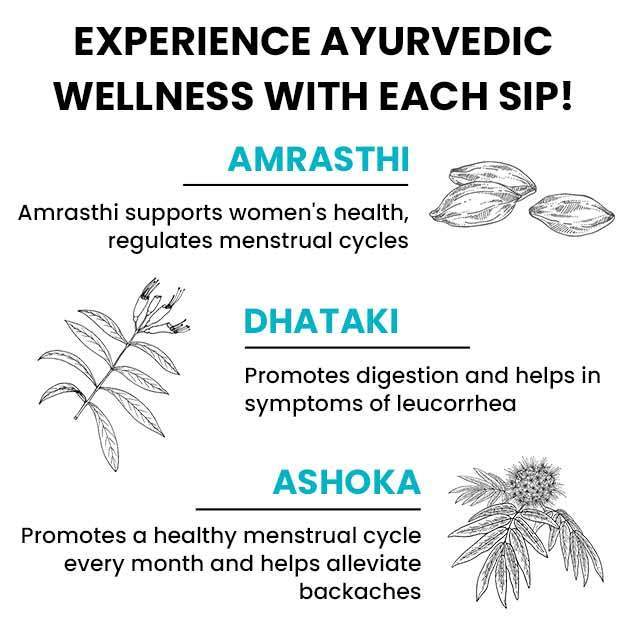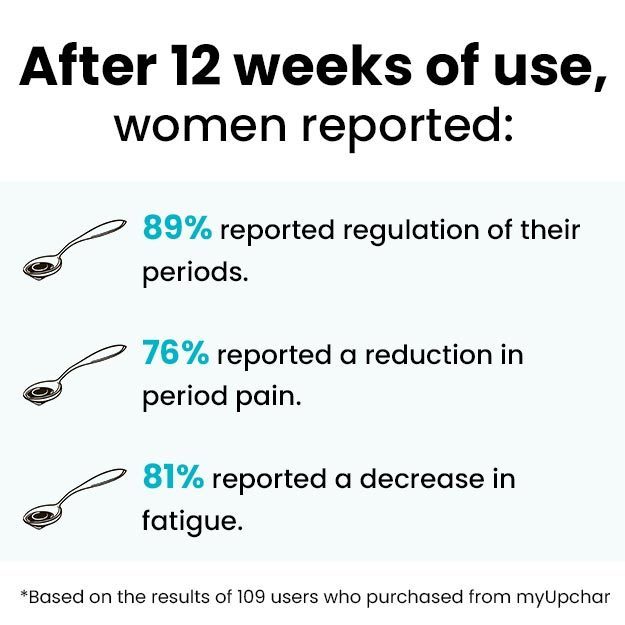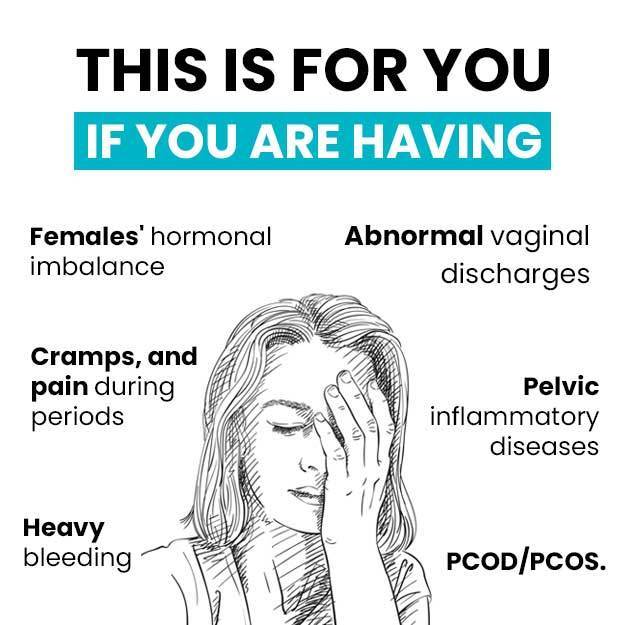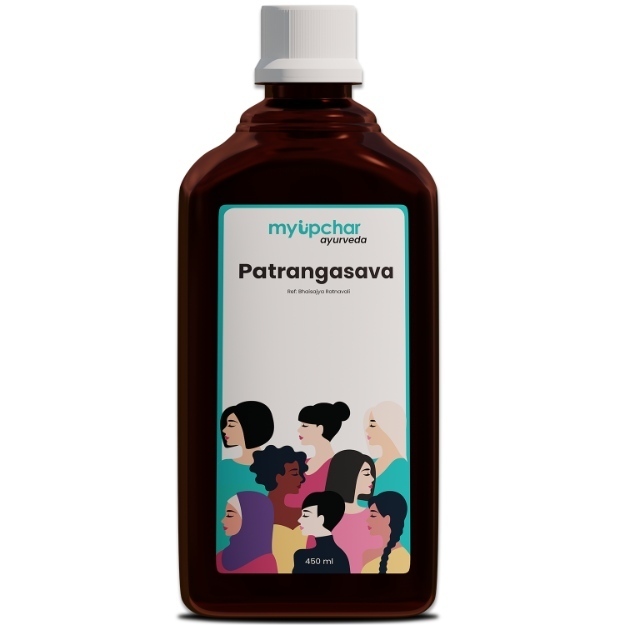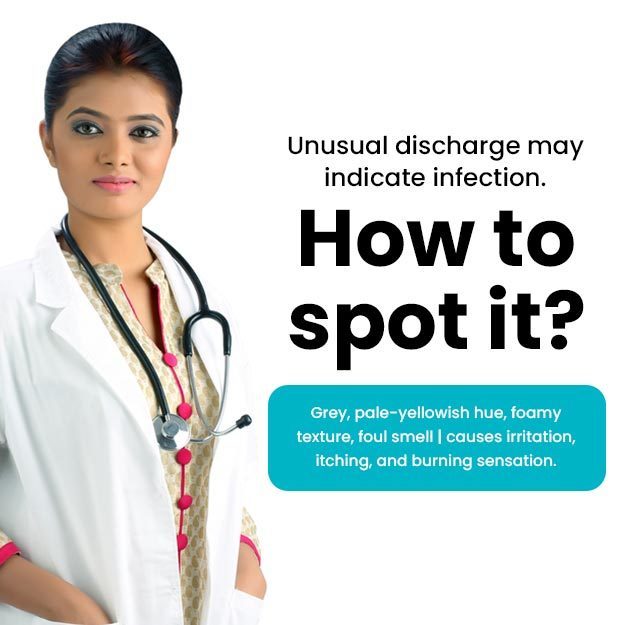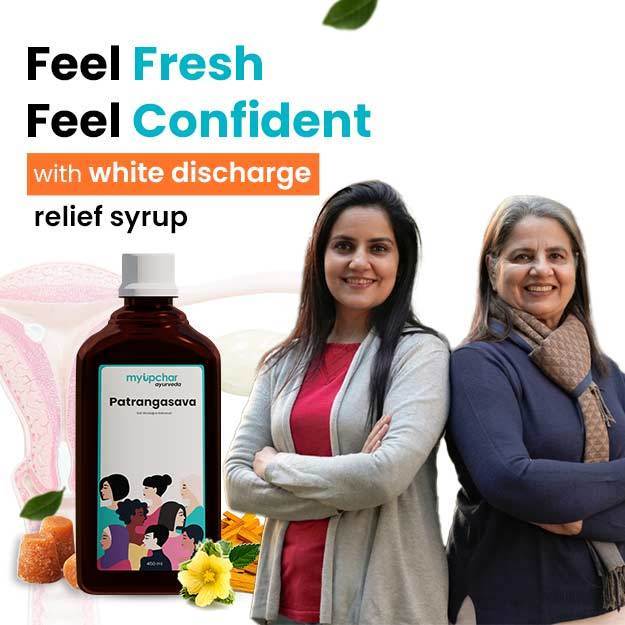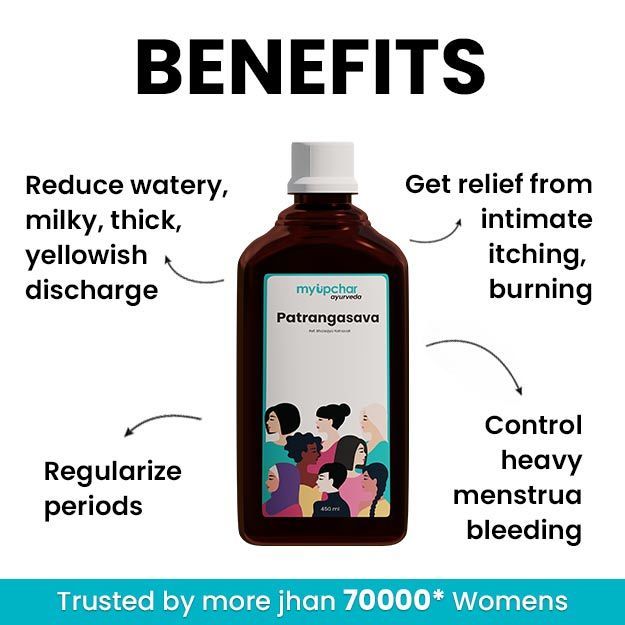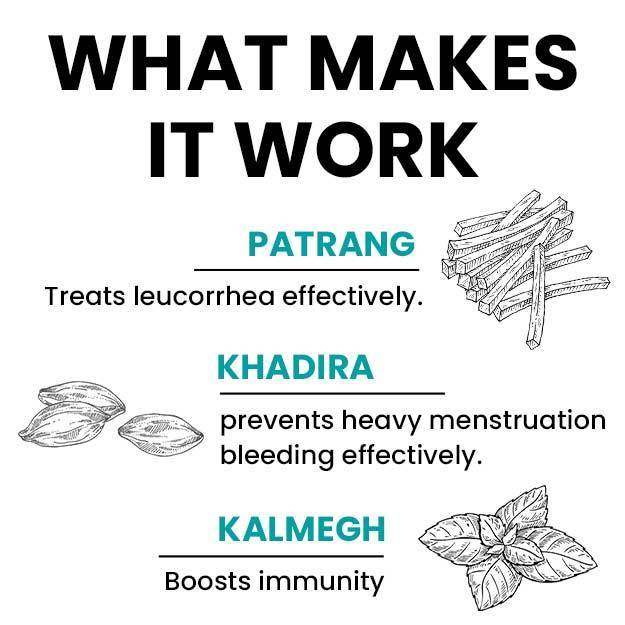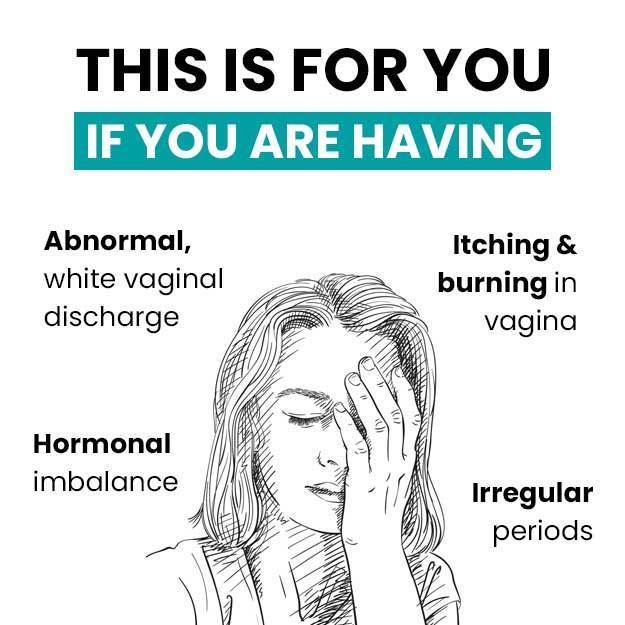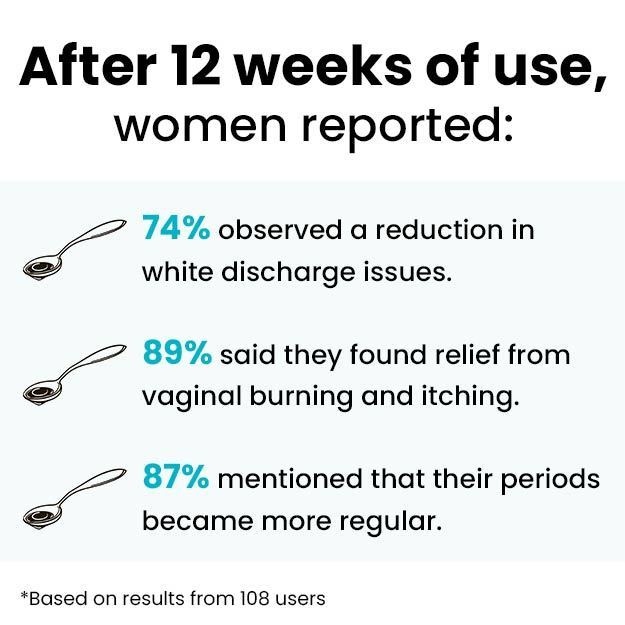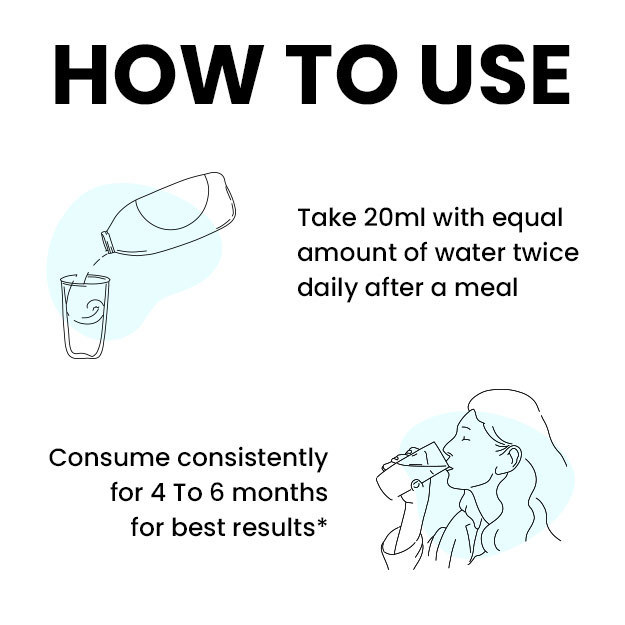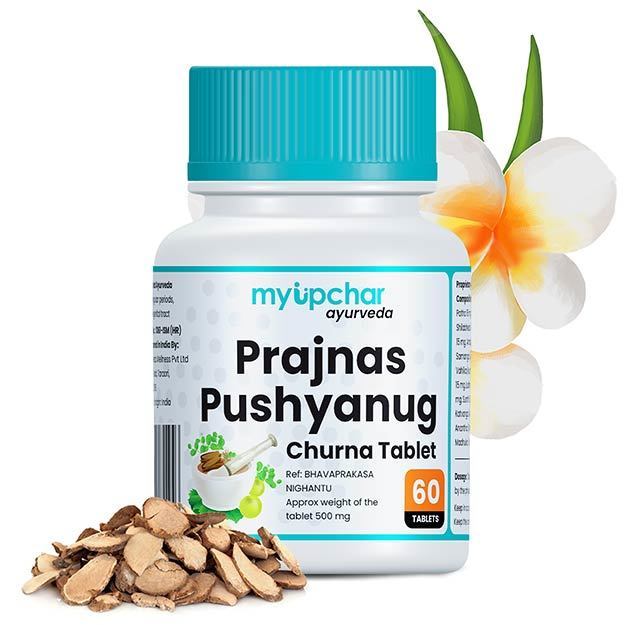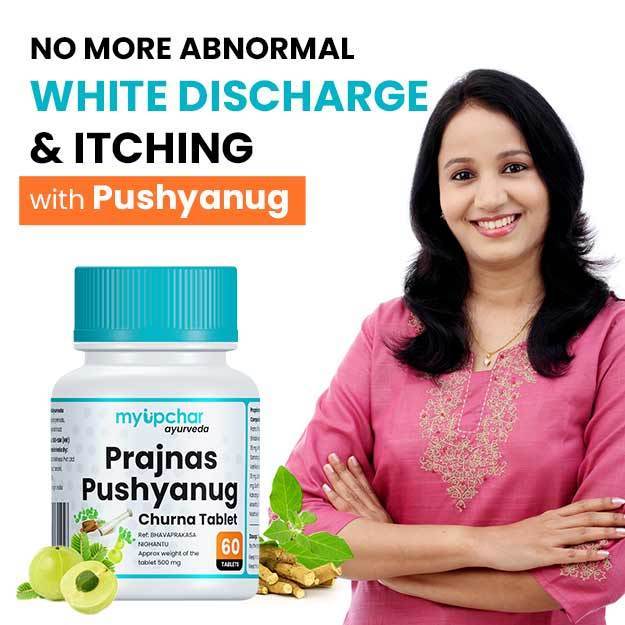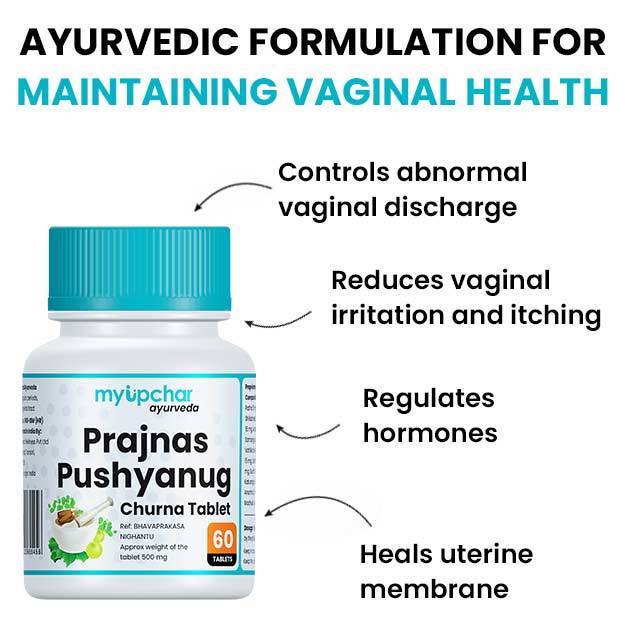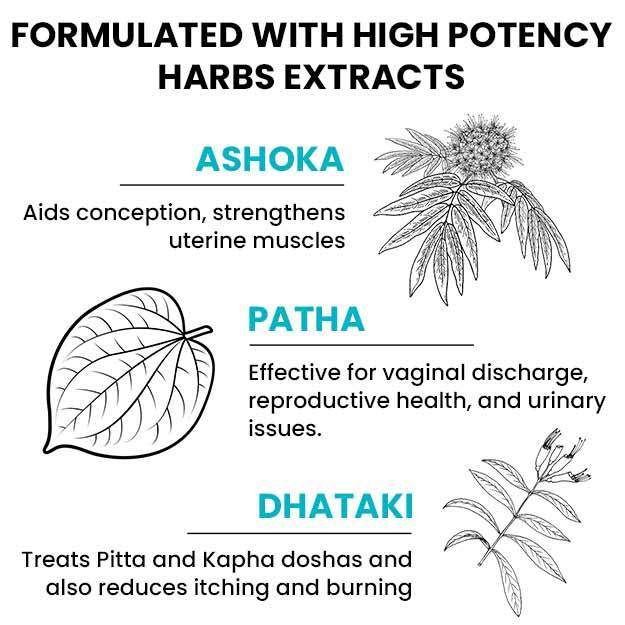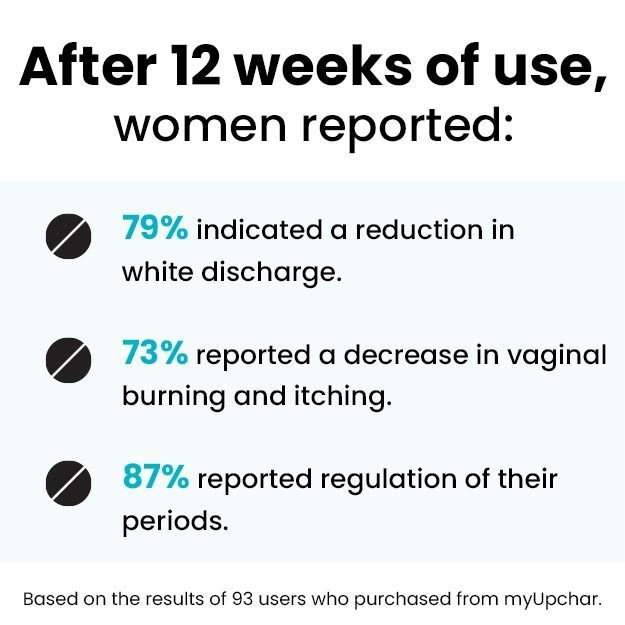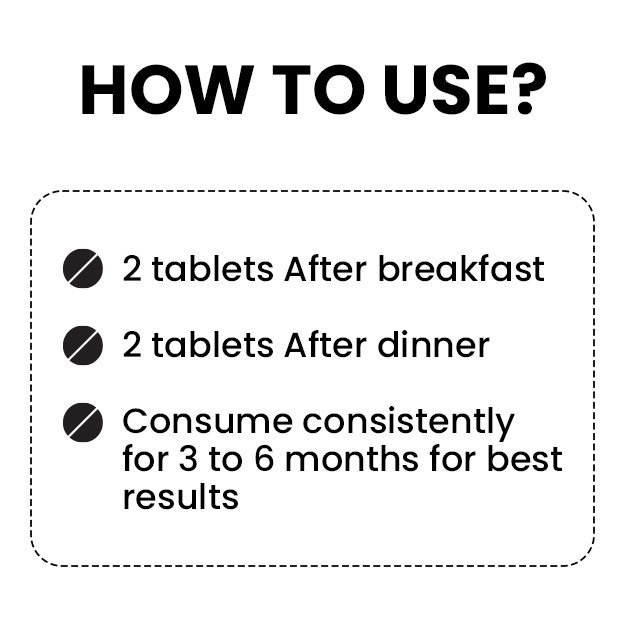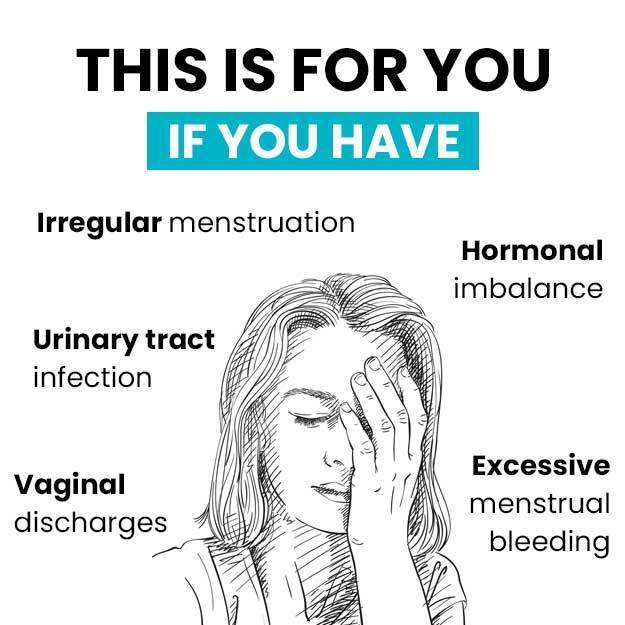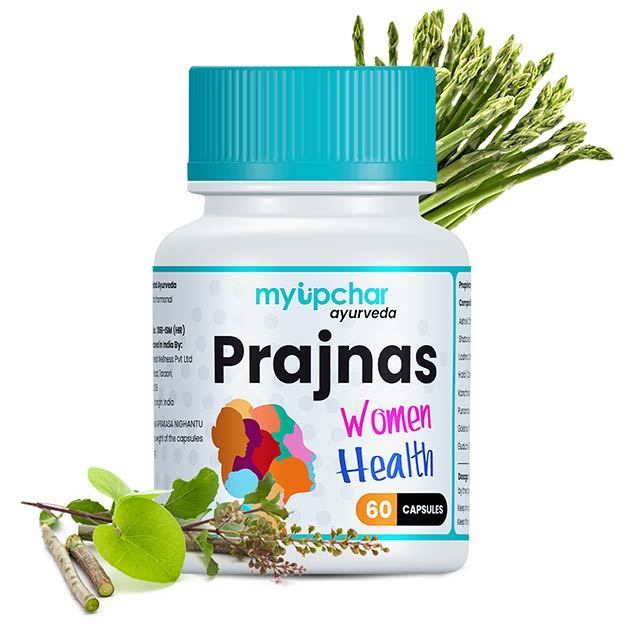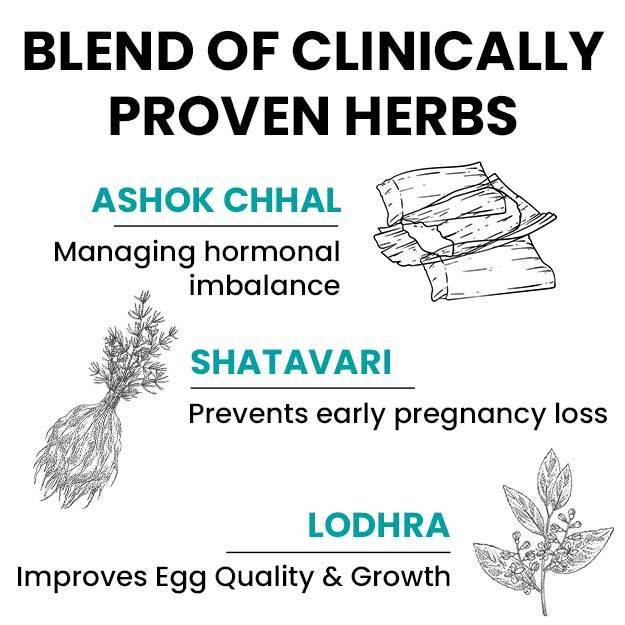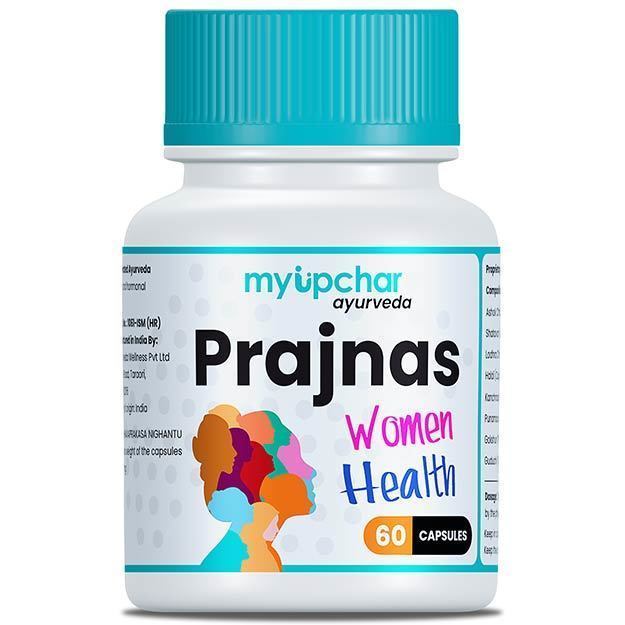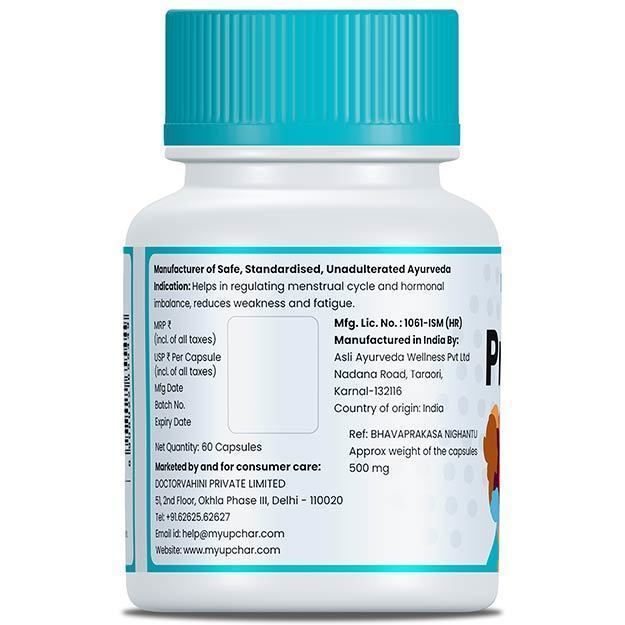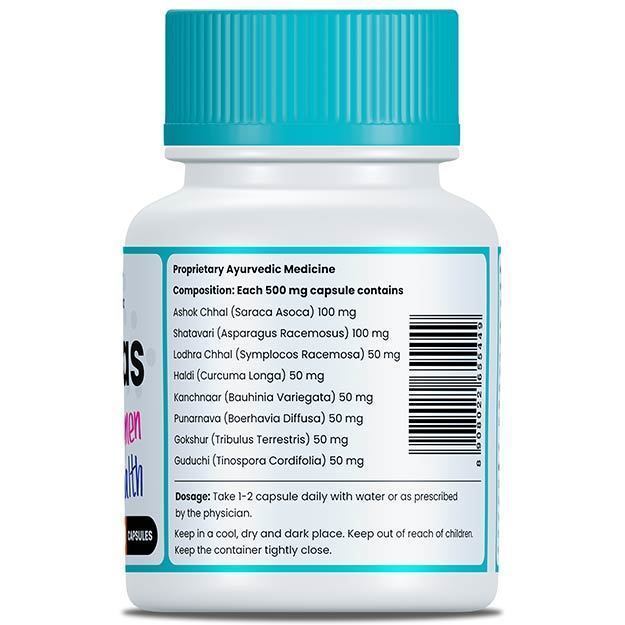Period pain is also known as menstrual pain or dysmenorrhea. It is experienced by almost every woman at least once during her life. However, not all women experience it at the same intensity and the same woman may also feel different menstrual cycles differently. For some, it is mild and less discomforting while for others, it gets quite painful and troublesome.
Period pain is felt in the lower pelvic region as menstrual cramps which may even spread to thighs, legs, lower back, and sometimes chest. The pain is usually most intense when a girl has her first period.
However, depending on your physical, mental and nutritional condition, you may experience period pain with different intensities in the later stages of your life as well. Mostly, period pain can be treated at home but if your pain is severe and unbearable, it is best to visit a gynaecologist to ensure that there is no underlying medical condition or disorder associated with the condition.
- Types of period pain
- Menstrual pain Remedy
-
Home remedies for period pain
- Magnesium to reduce period pain
- Turmeric helps get rid of period pain
- Ginger for menstrual pain relief
- Chamomile tea
- Avoid these foods to get rid of period pain
- Release stress to get rid of period pain
- Boron to reduce period pain
- Fennel seeds to reduce period pain
- Vitamin B1 and Fish oil for period pain
- Increase water intake to reduce period pain
- Exercise to reduce period pain
- Sleep effective in period pain
- Diet to reduce period pain
- Relaxation methods for period pain
- Massage in period pain
- Heat therapy for period pain
- Painkillers for period pain
- Period pain causes
- Symptoms of period pain
Types of period pain
Dysmenorrhea can be classified as primary or secondary based on the cause of pain.
- Primary Dysmenorrhea
Period pain that occurs solely because of the shedding of the inner lining of the uterus. There is no other associated disease that could cause this type of pain. Primary dysmenorrhea usually subsides with age or after pregnancy. - Secondary Dysmenorrhea
Secondary dysmenorrhea is defined as the pain which occurs because of a disorder of the reproductive organs. It starts a few days prior to the onset of the menstrual cycle, worsens during the period, and might not go away even after the bleeding has stopped.
Menstrual pain Remedy
The treatment of period pain depends on the underlying cause and may include treatment at home, medication, acupressure, acupuncture, surgery, etc.
Acupuncture for period pain relief
A study which was conducted in 2015 focused on the effect of acupuncture and acupressure on improving quality of life and relieve primary dysmenorrhea. It suggested that acupressure is as effective in pain relief as painkillers while acupuncture improves the quality of life in menstruating women.
Go to a professional acupressure and acupuncture expert to relieve your symptoms.
Acupressure for menstrual pain relief
A study based on the effectiveness of acupressure and acupuncture on primary dysmenorrhea suggests that including these two interventions are beneficial in reducing the duration and intensity of menstrual pain.
You may seek help from a professional acupressure or acupuncture specialist to relieve your pain.
Medicine for period pain
Here are some medications that are usually suggested for period pain:
- Primary dysmenorrhea is treatable by using the above-mentioned methods. However, sometimes the pain might get severe and you may need medical help. Your doctor may prescribe stronger painkillers or hormone pills, which reduce the intensity of period pain.
- If you have secondary dysmenorrhea then based on the cause, your doctor may prescribe you antibiotics, anti-inflammatory medicines, or hormonal oral contraceptives to treat the underlying bacterial or inflammatory diseases or any other cause of your symptoms.
Surgery for period pain
If the cause of your period pain is not treatable with medication, your doctor or gynaecologist may suggest that you undergo surgery to remove the underlying cause such as endometriosis, fibroids, adenomyosis, and cervical stenosis.
Home remedies for period pain
Primary dysmenorrhea can be easily treated at home using some of the following remedies:
Magnesium to reduce period pain
A literature review on the effects of magnesium on gynaecological condition suggested that this mineral helps in relieving period pain.
Hence, to relieve your period pain, you should include magnesium-rich foods in your diet such as spinach, kale, avocados, raspberries, bananas, etc. You may also speak to your gynaecologist about magnesium supplements that might help you decrease the intensity of your period pain.
Turmeric helps get rid of period pain
Turmeric is one of the most commonly used spices everywhere. It is also known for its anti-inflammatory and antioxidant properties. A research study conducted to assess the effects of turmeric on menstrual symptoms concluded that turmeric contains curcumin which has anti-inflammatory and neurotransmitter (chemicals that trigger the nerves) modulating properties, which helps reduce period pain
What do you need?
A half teaspoon of turmeric, one cup of water, half-inch ginger, a half teaspoon of honey.
How to use it?
Boil one cup of water and add turmeric, honey, and ginger to it. Brew for 2-3 minutes. Drink this tea three times a day.
Alternatively, you may also consult your ayurvedic doctor to know the dosage of curcumin extract capsules.
Ginger for menstrual pain relief
Ginger is one of the favorite herbs of many people across the world. It is widely used as an ingredient in a large number of food recipes as well as for its health benefits. A study conducted in 2012 focused on the effects of ginger on primary dysmenorrhea. It was found that ginger significantly reduces the duration and intensity of period pain.
What do you need?
3-4 ginger slices or one-inch ginger, one cup of water, a few drops of lemon juice, and a half teaspoon of honey.
How to use it?
You may either consume 3-4 ginger slices a day or consume ginger tea three times a day. To make ginger tea, you may add an inch of grated or crushed ginger to one cup of boiling water. To this, you may also add honey and lemon to improve the taste.
Chamomile tea
A systematic review to study the therapeutic effects of chamomile suggests that this herb is effective in reducing muscle spasms and other symptoms associated with menstrual cycles.
What do you need?
1-2 teaspoons of chamomile, a glass of water, a half teaspoon of honey.
How to use it?
To make a chamomile tea, add chamomile in a glass of water and steep for 5-7 minutes. Strain the tea and drink it 2-3 times a day while you’re on your period.
Avoid these foods to get rid of period pain
Bloating is a very common symptom during periods. Consuming food products such as coffee, alcohol, junk food, salty food, sugary food, etc leads to water retention in the body which causes bloating. Bloating may lead to pain. Hence, it is good to stay away from them for a while.
Read more: How to lose water weight
Release stress to get rid of period pain
Stress and anxiety lead to the production of stress hormones in your body which may worsen your symptoms. A prospective study on stress and dysmenorrhea suggests that women who have stress are at higher risk (twice as much as that in women who do not have stress) of developing dysmenorrhea.
Hence, releasing stress through exercise, yoga, meditation, dance, music, etc may help you reduce the intensity of period pain. You may also seek professional help from a therapist for the same.
Boron to reduce period pain
A recent systematic review of the effects of boron on reducing premenstrual symptoms suggested that taking boron supplements 10 mg per day helps in significantly reducing the intensity and duration of period pain.
You may take boron supplements once every day while you are on your period but we advise you to consult your physician before starting them.
Fennel seeds to reduce period pain
A study was conducted in 2012 on the effects of fennel on period pain. It suggested that taking 30 mg of fennel extract capsule significantly reduces period pain. The study involved the intake of these capsules four times a day for three days starting from the first day of the period. Hence, for pain relief, you may drink fennel tea, chew on fennel seeds, or take fennel extract supplements.
What do you need?
One teaspoon of fennel seeds, a cup of water, ginger, and honey.
How to use it?
You may start by adding fennel seeds to one cup of water. Boil this for 2-3 minutes. If you want, you may also add ginger and honey to improve the taste. Drink this tea 2-3 times a day when you’re on your period.
You may also consult a physician or an ayurvedic doctor to know the doses of fennel extract capsules that you need to take
Vitamin B1 and Fish oil for period pain
A study based on herbal and dietary supplements to treat primary and secondary dysmenorrhea suggests that vitamin B1 or Thiamine, when taken 100 mg daily, along with fish oil capsules, significantly reduce period pain.
Speak to your gynaecologist before taking vitamin B1 on your own. Your doctor will suggest the right doses for you and the duration for which you are supposed to take them. You may also take vitamin B1 rich food such as peas, legumes, nuts, oats, milk, rice, etc.
Read more: Vitamin B benefits
Increase water intake to reduce period pain
Drinking plenty of water is never a bad idea for your health. Having enough water will prevent water retention and will keep you away from bloating. Bloating can be painful when you are on your period. Hence, make sure you drink enough water before and during your period.
Read more: How much water to drink in a day
Exercise to reduce period pain
Various studies have been conducted over the last two decades to know the effects of exercise or yoga on primary dysmenorrhea. These studies suggest that moderate exercise during and after periods reduces the intensity of menstrual pain.
Therefore, any kind of physical activity such as yoga, exercise, stretching, and swimming will reduce your period pain by releasing endorphins or happy hormones. If you are regular with exercise, your pain may also reduce in intensity during successive menstrual cycles. Even having a vaginal orgasm by self-stimulation or by having sex may also reduce your period pain. Make sure your partner wears a condom because having sex during periods puts you at a higher risk of contracting infectious diseases such as pelvic inflammatory disease.
Read more: Household chores as a means of exercise
Sleep effective in period pain
Having a sound sleep almost always helps us through any kind of pain whatsoever. A study was conducted in 2015 on the relationship between premenstrual syndrome symptoms, menstrual attitude and sleep quality. This study suggests that disturbances in sleep patterns are directly related to the intensity and duration of the symptoms experienced during periods.
Hence, to reduce the intensity of your period pain, it is necessary that you take a good 7-8 hour sleep regularly and relax.
Read more: How to fall asleep
Diet to reduce period pain
A study based on the association between diet, dysmenorrhea and premenstrual symptoms suggests that a low-fat and high fiber vegetarian diet helps in reducing period pain and its intensity.
A few days before your period, avoid eating fat-rich diet, junk food, oily food, etc. Eat a healthy diet rich in fruits and vegetables with high water and fiber content. This will help in reducing your period pain and in improving your overall health as well.
Relaxation methods for period pain
Sometimes, stress, anxiety, and depression may also worsen your pain during periods. Hence, using relaxation techniques may help you reduce the intensity of pain by relaxing the muscles of your uterus and producing endorphins (happy hormones) in your body.
How to do it?
Lie down on your back on a soft base. Take deep breaths and focus on your breathing. Gently let your eyes shut and relax your body by concentrating on each and every muscle starting from head to your toe. Do this for at least 15-20 minutes. You may also put on meditation music for relaxation. Guided meditations and meditation music, both may be found on various websites.
Massage in period pain
A study done to assess the effects of massage therapy on dysmenorrhea suggests that massaging the pelvic area significantly reduces period pain.
What do you need?
10 mL of heated essential oil such as mustard oil, castor oil, coconut oil, sesame oil, etc.
How to use it?
You may take any one of the above-mentioned essential oils. Heat up the oil a little bit without bringing it to boil. Take some oil in your hand and massage your pelvic area and lower back with it using small circular gentle motions for 10-15 minutes. This may help you get some relief from your period pain. After the massage, you may also take a hot water bath.
Heat therapy for period pain
A systematic review of the studies based on the effect of heat therapy on primary dysmenorrhea suggested that heat therapy significantly reduces the lower abdominal pain in periods.
What do you need?
Hot water, a plastic bottle or water bag.
How to use it?
For heat therapy, you may either fill a water bag or plastic bottle with hot water and put it on your pelvis. Make sure it is not leaking from anywhere to prevent hot water burns.
Alternatively, you may also sit in a hot water tub for half an hour or take a shower in hot water to relieve your pain.
Painkillers for period pain
When your pain becomes unbearable, you may take non-steroidal anti-inflammatory drugs which are available over-the-counter (OYC) such as diclofenac, ibuprofen, acetaminophen, etc. These medicines help in reducing the level of prostaglandins in the body and hence relieve period pain.
Although the abovementioned medicines do not need a prescription, you should not take them if you have stomach ulcers, kidney diseases, liver diseases, heart diseases, asthma, etc. Under such conditions, we advise you to consult your physician for an alternative painkiller to relieve your period pain.
Period pain causes
Following are some of the causes associated with period pain:
Primary dysmenorrhea
It starts right before menstruation begins. When the egg is not fertilized, the uterus begins the process of shedding its inner lining (endometrium usually thickens during menstrual cycle to prepare for fertilization). During this process, prostaglandins (hormones that are produced by the uterus) start accumulating in the inner lining of the uterus. These hormones cause contraction of the uterine wall so the extra tissue can be shed. When they are strong, the contractions are felt like cramps in the pelvic region. Furthermore, with the shedding of the endometrium, blood vessels inside the uterus contract, and as a result, oxygen supply is reduced. This further sends signals to the brain and triggers pain receptors. As a result, the pain worsens on the first day of the menstrual cycle. As the days pass by, the thickness of the endometrium reduces, which also leads to a fall in the level of prostaglandins. Hence, the pain relieves as the cycle proceeds. Pain during periods may also occur because of bloating, which is a very common symptom in periods. There is no other underlying disorder that might cause pain in primary dysmenorrhea.
Read more: Period bloating causes
Secondary dysmenorrhea
It is experienced because of an underlying disorder of the reproductive system. According to a research article, Dysmenorrhea and Related disorders, the following are a few medical conditions that result in secondary dysmenorrhea:
- Endometriosis
It is a condition in which the cells of the endometrium outgrow and extend to places other than the uterus. They might overgrow into the fallopian tubes, the ovaries, or the bladder. This endometrium is also shed in response to the hormonal changes during periods. As a result, bleeding starts in the uterus as well as in places where the endometrium outgrows. This blood causes adhesion (sticking together) of various organs and pain.
Read more: Endometriosis treatment
- Adenomyosis
When the endometrial tissue pushes through the muscles of the uterus and starts growing, it is known as adenomyosis. It causes severe pain in the lower abdomen, menstrual cramps, enlargement of the uterus, and heavy menstrual flow. - Fibroids
Fibroids are polyp-like non-cancerous growths of the uterine wall. They are usually small in size and may occur anywhere in the uterus. Small fibroids do not cause any problems but those which are large in size may cause severe pain, heavy menstrual bleeding, etc. - Pelvic inflammatory disease (PID)
When there is a bacterial infection in the uterus, fallopian tubes, or ovaries, it causes inflammation (swelling) of the affected areas in the pelvis. This is known as pelvic inflammatory disease. It can cause severe pain during periods. However, pelvic pain persists even after the bleeding has stopped. - Intrauterine Devices (IUDs)
Intrauterine devices are contraceptive methods in which a device is inserted into the uterus to prevent pregnancy. The body takes a few months to adapt to the device and during this period, they may become a cause of pain during periods. After a while, the pain may disappear completely. - Cervical stenosis
When the cervix or the birth canal is narrower than usual, it becomes painful when the blood tries to push through it to flow out of the body during periods. As a result, severe pain may be experienced.
Symptoms of period pain
The most common symptom of dysmenorrhea is pain in the lower abdomen. However, you may also experience some other symptoms of primary dysmenorrhea such as:
- Pain in the thighs, which might also spread to your legs, lower back, chest, etc.
- Nausea
- Vomiting may also be experienced. Usually, some pain relief may be experienced after puking.
- Fatigue
- Irritability
- Dizziness
When to see a gynaecologist?
The above-mentioned symptoms are normally seen in primary dysmenorrhea and can easily subside on taking home treatments and rest. However, if you have any of the following symptoms of secondary dysmenorrhea, you should visit your doctor or gynaecologist.
- Vaginal discharge with other symptoms like itching, redness, and pain.
- Foul smell from private parts.
- Bleeding from the vagina when you are not expecting your periods.
- Severe recurrent pain in the pelvis for no identifiable reason.
Find Obstetrician and Gynaecologist in cities
- Obstetrician and Gynaecologist in Bangalore
- Obstetrician and Gynaecologist in Mumbai
- Obstetrician and Gynaecologist in Ghaziabad
- Obstetrician and Gynaecologist in Chennai
- Obstetrician and Gynaecologist in Pune
- Obstetrician and Gynaecologist in Delhi
- Obstetrician and Gynaecologist in Hyderabad
- Obstetrician and Gynaecologist in New Delhi
- Obstetrician and Gynaecologist in Gwalior
- Obstetrician and Gynaecologist in Gurgaon
Doctors for Period Pain

Dr. Ayushi Gandhi
Obstetrics & Gynaecology
4 Years of Experience

Dr. Anjali
Obstetrics & Gynaecology
23 Years of Experience

Dr.Anuja Ojha
Obstetrics & Gynaecology
20 Years of Experience



